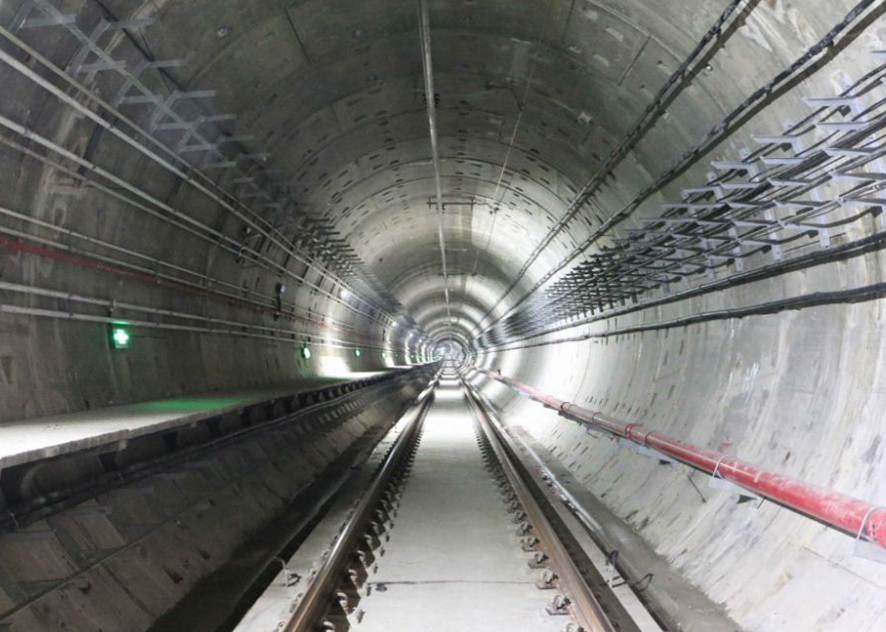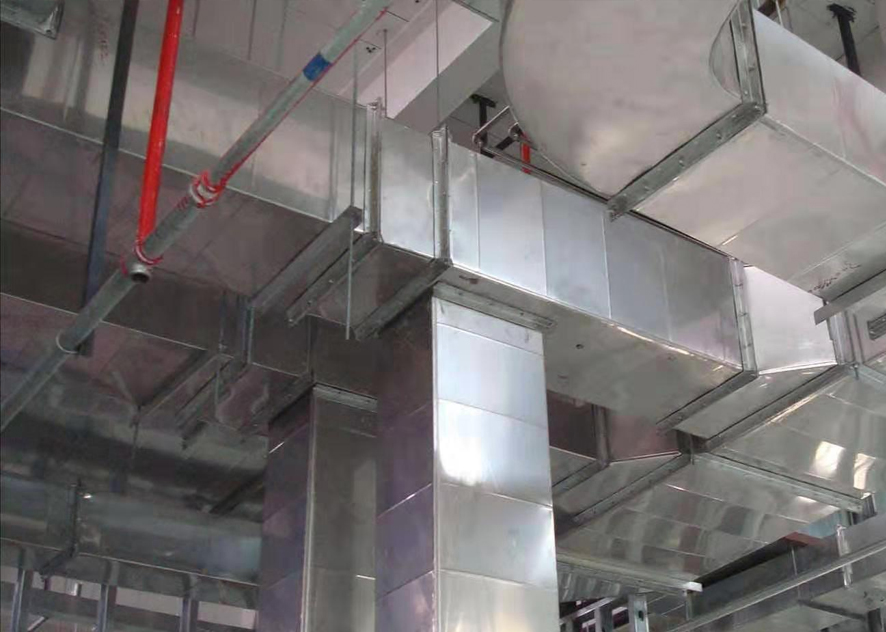Heating cable, this magical existence, is like a dynamic fire dragon, spreading heat energy to every corner. It shows its talents in many fields such as construction, agriculture, chemical industry, electric power, etc., bringing endless warmth to our life and work. Today, we will take you to find out and gain an in-depth understanding of the principles, types, applications and advantages of heating cables.
The heart of the heating cable is the unique resistor. It cleverly combines insulation, casing and terminals to create this heat transfer channel. The working principle of the resistor is like an electric current running on a race track, colliding with the resistor and stimulating hot sparks, thereby converting it into the heat energy we need.

Wide range of applications for heating cables
Imagine that high in the sky, heating cables are silently guarding the overhead pipes required for firefighting and industrial fluids, bringing them warmth; on land, they are transformed into guardians of floor heating, de-icing roads and providing insulation for buried Floor duct heating. And on that distant seabed, they also play an indispensable role, bringing life to swimming pools and aquariums, guarding the warmth of water sources, and providing anti-freezing and thermal insulation barriers for pipes or underwater devices.
On the big stage of industry, heating cables are even more versatile. They prevent liquids in pipes and tanks, such as water, oil, gases or chemicals, from solidifying, crystallizing or becoming viscous due to cold. In our daily lives, they silently guard the warmth of the home, providing continuous heat for floor heating, anti-fog mirrors or electric blankets.
However, just as every coin has two sides, although heating cables have such a wide range of applications, in actual projects, we still need to comprehensively consider other heating methods, such as waste heat, steam, hot water, etc., based on specific circumstances. After all, choosing the most reasonable and economical solution is the best way to solve the problem.
What’s the appeal of heating cables? First, they are incredibly efficient. 100% of the electrical energy is converted into heat without any loss or emission. Secondly, they are amazingly flexible, adapting perfectly to any shape and size of surface or installation, demonstrating the beauty of customization and modular design. Furthermore, safety is another highlight of them, with protection from water, dust and chemicals, keeping the risk of fire or electric shock away from us. Finally, their durability is reassuring, with long service life and no need for maintenance or cleaning, making us rely on them even more.
Overall, heating cables are like a versatile artist, bringing warmth and life to every area. They come in different types, each with their own unique characteristics and applications, all designed to better meet the thermal needs of the project. Let us look forward to the fact that heating cables can bring us more surprises and warmth in the future.
Resistor, as the soul of heating cable, its manufacturing process is full of the charm of science and technology. Conductive materials are carefully shaped and transformed into various resistive bodies. When electric current passes through these resistors, they act like dancers on a stage, dancing with the electric current and performing spectacular thermal energy feasts. These resistors are mostly made of high-quality materials such as electrical alloy wire, copper, nickel, chromium alloy, etc., ensuring the stability and durability of the heating cable.
In the geothermal system, heating cables and cold cables are closely connected through waterproof junction boxes, just like the veins of life, continuously injecting energy into them. Once the connection is successful, electric current flows in the heating cable, like gurgling water, quietly converting electrical energy into thermal energy, which is warm and lasting. This heat energy passes through the embrace of the cement layer and gently embraces every corner of the room through conduction and radiation, bringing a touch of warmth to objects and the air. Its power is like a fine thread woven by skillful hands, about 18W per meter, which is just right.
Different from ordinary cables, heating cables must emit a touch of heat under their normal working conditions. In order to prevent the heating tape from overheating, we cleverly installed a temperature sensor on its outer layer. It is like an intimate guardian, always monitoring the temperature of the heating tape to ensure its safety. The operating temperature and power of the heating cable are like carefully arranged music, which can be flexibly adjusted according to specific needs to play a harmonious song.
The world of heating cables is rich and colorful. According to their heating temperature, we can divide them into three families: Baja type, medium type and high type. They are like dancers, jumping lightly on the stage, showing different styles. Usually, heating cables can easily reach high temperatures of 65°C, while heating cables used for space heating are like a spring breeze, maintaining a pleasant temperature of around 20°C. What's even more amazing is that the heat-resistant temperature of the heating cable is as high as 105°C. When fluoroplastic coating material is used, it can even climb to 205°C, like a blazing flame, without fear of the test of high temperature.
In the ocean of cables, heating cables are divided into three categories: constant power cables, series cables and self-control temperature cables according to different types of power sources. Like a steadfast watcher, constant power cables have a fixed resistance and emit a constant heat output per meter, providing a steady stream of energy for applications that require uniform high temperatures, such as pipe heating, storage tanks or hoppers.
A serial cable is like a living vein, its resistance changes with demand, its length is carefully designed, and it is closely connected to the power supply. It shuttles through places that require gentle and flexible temperature regulation, like a caring guardian, silently clearing the frost on roofs, gutters or slopes.
The self-adjusting cable is more like a smart regulator. It keenly senses temperature changes in the surrounding environment, automatically adjusts the output power, and provides just the right amount of warmth for places that need to prevent freezing. During the cold winter months, it protects pipes, valves, and faucets from becoming trapped by frost.
Furthermore, the world of heating cables is as diverse as the rainbow. Depending on the material, it can be a tough heating alloy, an efficient PTC heating element or a lightweight carbon fiber heating element. In the face of different usage environments, it can be transformed into a high-temperature-resistant cable to withstand high temperatures; or an anti-UV cable, fearless of the baptism of sunlight; or a flame-retardant cable to protect safety; or even a halogen-free cable. Cable, environmentally friendly and healthy. Each type of cable is tailor-made according to specific needs. They work silently in their respective positions to bring warmth and convenience to our lives.
Wide range of applications for heating cables
Imagine that high in the sky, heating cables are silently guarding the overhead pipes required for firefighting and industrial fluids, bringing them warmth; on land, they are transformed into guardians of floor heating, de-icing roads and providing insulation for buried Floor duct heating. And on that distant seabed, they also play an indispensable role, bringing life to swimming pools and aquariums, guarding the warmth of water sources, and providing anti-freezing and thermal insulation barriers for pipes or underwater devices.
On the big stage of industry, heating cables are even more versatile. They prevent liquids in pipes and tanks, such as water, oil, gases or chemicals, from solidifying, crystallizing or becoming viscous due to cold. In our daily lives, they silently guard the warmth of the home, providing continuous heat for floor heating, anti-fog mirrors or electric blankets.
However, just as every coin has two sides, although heating cables have such a wide range of applications, in actual projects, we still need to comprehensively consider other heating methods, such as waste heat, steam, hot water, etc., based on specific circumstances. After all, choosing the most reasonable and economical solution is the best way to solve the problem.
What’s the appeal of heating cables? First, they are incredibly efficient. 100% of the electrical energy is converted into heat without any loss or emission. Secondly, they are amazingly flexible, adapting perfectly to any shape and size of surface or installation, demonstrating the beauty of customization and modular design. Furthermore, safety is another highlight of them, with protection from water, dust and chemicals, keeping the risk of fire or electric shock away from us. Finally, their durability is reassuring, with long service life and no need for maintenance or cleaning, making us rely on them even more.
Overall, heating cables are like a versatile artist, bringing warmth and life to every area. They come in different types, each with their own unique characteristics and applications, all designed to better meet the thermal needs of the project. Let us look forward to the fact that heating cables can bring us more surprises and warmth in the future.

 English
English Español
Español Português
Português русский
русский français
français 日本語
日本語 Deutsch
Deutsch Tiếng Việt
Tiếng Việt Italiano
Italiano Nederlands
Nederlands ไทย
ไทย Polski
Polski 한국어
한국어 Svenska
Svenska magyar
magyar Malay
Malay বাংলা
বাংলা Dansk
Dansk Suomi
Suomi हिन्दी
हिन्दी Pilipino
Pilipino Türk
Türk Gaeilge
Gaeilge عربى
عربى Indonesia
Indonesia norsk
norsk اردو
اردو čeština
čeština Ελληνικά
Ελληνικά Українська
Українська Javanese
Javanese فارسی
فارسی தமிழ்
தமிழ் తెలుగు
తెలుగు नेपाली
नेपाली Burmese
Burmese български
български ລາວ
ລາວ Latine
Latine Қазақ
Қазақ Euskal
Euskal Azərbaycan
Azərbaycan slovenský
slovenský Македонски
Македонски Lietuvos
Lietuvos Eesti Keel
Eesti Keel Română
Română Slovenski
Slovenski मराठी
मराठी Српски
Српски 简体中文
简体中文 Esperanto
Esperanto Afrikaans
Afrikaans Català
Català עִברִית
עִברִית Cymraeg
Cymraeg Galego
Galego 繁体中文
繁体中文 Latvietis
Latvietis icelandic
icelandic יידיש
יידיש Беларус
Беларус Hrvatski
Hrvatski Kreyòl ayisyen
Kreyòl ayisyen Shqiptar
Shqiptar Malti
Malti lugha ya Kiswahili
lugha ya Kiswahili አማርኛ
አማርኛ Bosanski
Bosanski Frysk
Frysk ជនជាតិខ្មែរ
ជនជាតិខ្មែរ ქართული
ქართული ગુજરાતી
ગુજરાતી Hausa
Hausa Кыргыз тили
Кыргыз тили ಕನ್ನಡ
ಕನ್ನಡ Corsa
Corsa Kurdî
Kurdî മലയാളം
മലയാളം Maori
Maori Монгол хэл
Монгол хэл Hmong
Hmong IsiXhosa
IsiXhosa Zulu
Zulu Punjabi
Punjabi پښتو
پښتو Chichewa
Chichewa Samoa
Samoa Sesotho
Sesotho සිංහල
සිංහල Gàidhlig
Gàidhlig Cebuano
Cebuano Somali
Somali Точик
Точик O'zbek
O'zbek Hawaiian
Hawaiian سنڌي
سنڌي Shinra
Shinra հայերեն
հայերեն Igbo
Igbo Sundanese
Sundanese Lëtzebuergesch
Lëtzebuergesch Malagasy
Malagasy Yoruba
Yoruba









